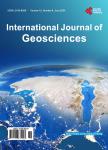Do Near-Solar-System Supernovae Enhance Volcanic Activities on Earth and Neighbouring Planets on Their Paths through the Spiral Arms of the Milky Way, and What Might Be the Consequences for Estimations of Earth’s History and Predictions for Its Future?
Do Near-Solar-System Supernovae Enhance Volcanic Activities on Earth and Neighbouring Planets on Their Paths through the Spiral Arms of the Milky Way, and What Might Be the Consequences for Estimations of Earth’s History and Predictions for Its Future?作者机构:Institute of Geophysics University of Hamburg Hamburg Germany
出 版 物:《International Journal of Geosciences》 (地球科学国际期刊(英文))
年 卷 期:2019年第10卷第5期
页 面:563-575页
学科分类:1002[医学-临床医学] 100214[医学-肿瘤学] 10[医学]
主 题:Synchronous Planetary Magmatism Galactic Heat Source Supernovae and White Dwarfs Neutrinos Mass Extinctions
摘 要:Recent observations of young volcanism on the near-Earth terrestrial planets require a new understanding. Magmatic/volcanic episodes on Venus, Mars and Mercury, as well as on Earth’s Moon, are apparently contemporaneous thermal events that accompanied increased magmatic/volcanic activity on Earth, following a 300-Myr cycle. A collateral galactic thermal source in the Milky Way appears to be needed that would predominantly affect the interior of the planets and, perhaps indirectly, Earth’s biosphere, compared to other galactic sources, such as intense cosmic rays or large, rocky bolides. The search for such a source leads to near-Earth supernovae, with their neutrino output, and to the question of whether those neutrinos could act as energy transmitters to heat up the body of Earth, and also enhance its short-term magmatic processes;for example, Cenozoic anorogenic volcanism. This observation challenges present assumptions and paradigms about Earth’s history, and requires the following reconsiderations: 1) the real origin of the end-Cretaceous mass extinction;2) the general radioactive age determinations of rocks;and 3) geodynamic modelling using additional, external heat sources.



